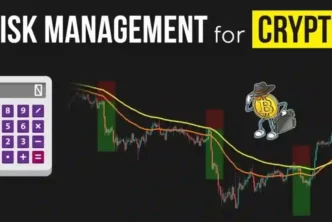Trading in the foreign exchange market (Forex) can be both exciting and profitable. However, for beginners, it may also seem overwhelming. With its unique dynamics, the Forex market offers both opportunities and risks. To help you embark on this journey successfully, this beginner’s guide will cover the basics, trading strategies, and important tips to ensure that you can navigate Forex trading with confidence.
What is Forex Trading?
Understanding Forex Market
Forex, or foreign exchange, refers to the global market for buying and selling currencies. The Forex market is the largest financial market in the world, with a daily turnover of more than $6 trillion. Unlike other financial markets, Forex operates 24 hours a day, five days a week, providing ample opportunities for traders across the world to buy and sell currencies.
Forex trading involves the exchange of one currency for another at a predetermined rate. These transactions happen in currency pairs, such as EUR/USD (Euro/US Dollar) or GBP/JPY (British Pound/Japanese Yen). The price of a currency pair is determined by the relative value of one currency against another.
How Forex Trading Works
When you trade Forex, you speculate on whether the value of a currency will rise or fall in relation to another currency. For instance, if you think the value of the euro will increase against the US dollar, you would buy the EUR/USD currency pair. Conversely, if you expect the euro to fall against the dollar, you would sell the pair.
Forex trading can be done using leverage, which means that traders can control larger positions with a smaller amount of capital. While leverage can amplify gains, it also increases the potential for losses, making risk management crucial in Forex trading.
Key Concepts in Forex Trading
Currency Pairs and How to Read Them
In Forex trading, currencies are traded in pairs. The first currency in the pair is known as the base currency, while the second currency is the quote currency. For example, in the EUR/USD pair, EUR is the base currency, and USD is the quote currency.
When you see the price of a currency pair, such as 1.2500, it means that one unit of the base currency (EUR) is worth 1.2500 units of the quote currency (USD). If you believe the value of the base currency will increase against the quote currency, you would buy the pair. Conversely, if you expect the base currency to decrease in value, you would sell the pair.
Bid and Ask Price
The bid price refers to the price at which you can sell the currency pair, while the ask price is the price at which you can buy the currency pair. The difference between these two prices is known as the spread. This spread represents the transaction cost in Forex trading and can vary depending on the currency pair, market conditions, and your broker.
Leverage and Margin
Leverage allows traders to control larger positions than they could with their own capital. For example, with 50:1 leverage, you can control a position worth $50,000 with just $1,000 in your account. While leverage can enhance potential profits, it also increases the risk of significant losses.
Margin refers to the amount of money required to open and maintain a leveraged position. It’s important to understand margin requirements and ensure that you have enough funds in your account to avoid a margin call, where the broker asks you to deposit more funds or close a position to cover losses.
Pip and Lot Size
A pip is the smallest price movement in the Forex market. It is usually the fourth decimal point in a currency pair’s price (0.0001), though for certain pairs like the Japanese yen, it’s the second decimal place (0.01). Pips are used to measure price changes and are crucial in determining potential profits or losses.
A lot is the size of the trade. In Forex, the standard lot size is 100,000 units of the base currency. There are also mini lots (10,000 units) and micro-lots (1,000 units). The size of your lot will impact your risk and potential profit.
Steps to Begin Trading Forex
1. Choose the Right Broker
Before you start trading, it’s crucial to select a reputable Forex broker. A good broker will offer competitive spreads, a user-friendly trading platform, and access to various currency pairs. They should also be regulated by a recognized financial authority, ensuring that they adhere to strict financial standards and practices.
2. Open a Trading Account
Once you’ve chosen a broker, you’ll need to open a trading account. Brokers typically offer different types of accounts, such as standard accounts, demo accounts, and ECN accounts. For beginners, starting with a demo account is a great way to practice trading with virtual money before risking your own capital.
3. Fund Your Account
After opening your trading account, you’ll need to fund it. Brokers usually offer multiple deposit methods, including credit/debit cards, bank transfers, and e-wallets. Ensure that you understand the deposit and withdrawal procedures, as well as any fees that may apply.
4. Learn the Basics of Forex Analysis
To make informed trading decisions, you’ll need to understand how to analyze the Forex market. There are two main types of analysis in Forex trading: fundamental analysis and technical analysis.
Fundamental Analysis
Fundamental analysis involves evaluating economic, political, and social factors that might influence the value of a currency. Key indicators such as interest rates, GDP, inflation, and employment data can impact currency prices. Keeping an eye on economic calendars and news events is essential for fundamental traders.
Technical Analysis
Technical analysis focuses on studying price charts and patterns to predict future price movements. Traders use various indicators, such as moving averages, RSI (Relative Strength Index), and MACD (Moving Average Convergence Divergence), to identify trends and entry/exit points. Mastering technical analysis can help you make more precise trades based on historical price data.
5. Practice with a Demo Account
Most brokers offer demo accounts that allow you to practice trading with virtual funds. This is an excellent way to familiarize yourself with the trading platform, test strategies, and gain experience without risking real money. Practice consistently until you feel comfortable with the trading process.
6. Develop a Trading Plan
A well-defined trading plan is essential for success in Forex trading. Your plan should include your trading goals, risk tolerance, preferred currency pairs, and the strategies you’ll use. It’s important to stick to your plan and avoid emotional trading, as decisions based on emotions can lead to significant losses.
7. Start Trading with a Small Investment
Once you feel confident in your skills and knowledge, you can start trading with real money. Start with a small investment that you can afford to lose. As you gain more experience and consistency, you can gradually increase your trading capital.
Tips for Successful Forex Trading
1. Manage Your Risk
Risk management is crucial in Forex trading. It’s important to only risk a small percentage of your account balance on each trade, typically 1-2%. Using stop-loss orders can help protect your capital by automatically closing a trade at a predetermined loss level.
2. Use Leverage Carefully
While leverage can amplify your profits, it can also magnify your losses. It’s essential to use leverage cautiously and ensure that you’re trading within your risk tolerance. Avoid using high levels of leverage, especially when you’re just starting.
3. Stay Informed
The Forex market is influenced by various factors, including economic data, geopolitical events, and market sentiment. Stay informed by following news updates and economic reports. You can also use Forex news websites and social media platforms to stay up-to-date with market trends.
4. Keep a Trading Journal
Keeping a trading journal helps you track your trades, identify patterns, and learn from your mistakes. Record details about each trade, including the reasons for entering the trade, the outcome, and any lessons learned. This will help you improve your trading skills over time.
5. Be Patient and Disciplined
Forex trading requires patience and discipline. Avoid the temptation to chase quick profits or overtrade. Stick to your trading plan, and be prepared for both wins and losses. Consistent, disciplined trading is key to long-term success in Forex.
6. Learn from Others
Joining online Forex communities or following experienced traders can provide valuable insights and tips. Learn from others’ experiences and apply that knowledge to improve your own trading strategy.
Conclusion
Forex trading can be a rewarding endeavor, but it’s important to approach it with a clear understanding of the market and a disciplined strategy. By learning the basics, practicing with a demo account, and following sound risk management principles, you can increase your chances of success. Remember, Forex trading is a skill that takes time to master, so be patient and continue to learn and adapt as you gain experience. With dedication and a solid trading plan, you can become a successful Forex trader.





